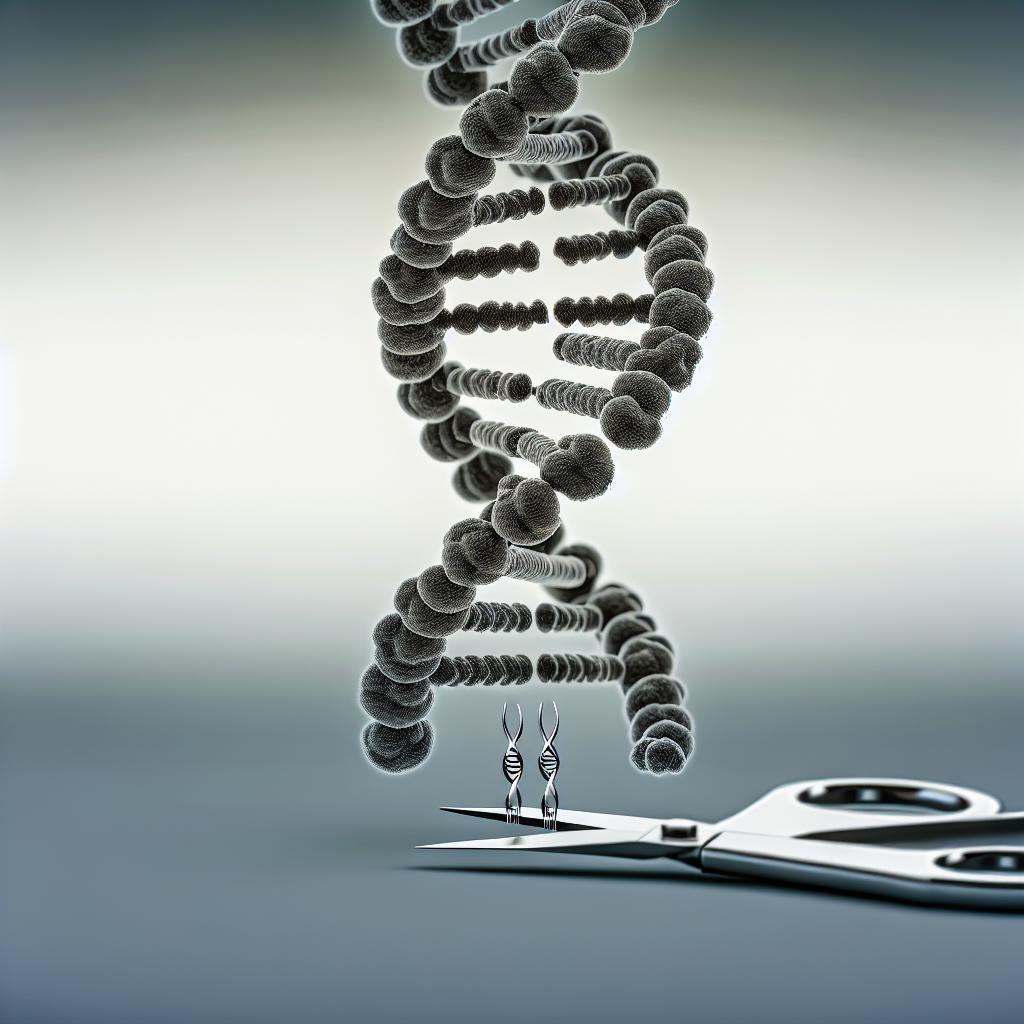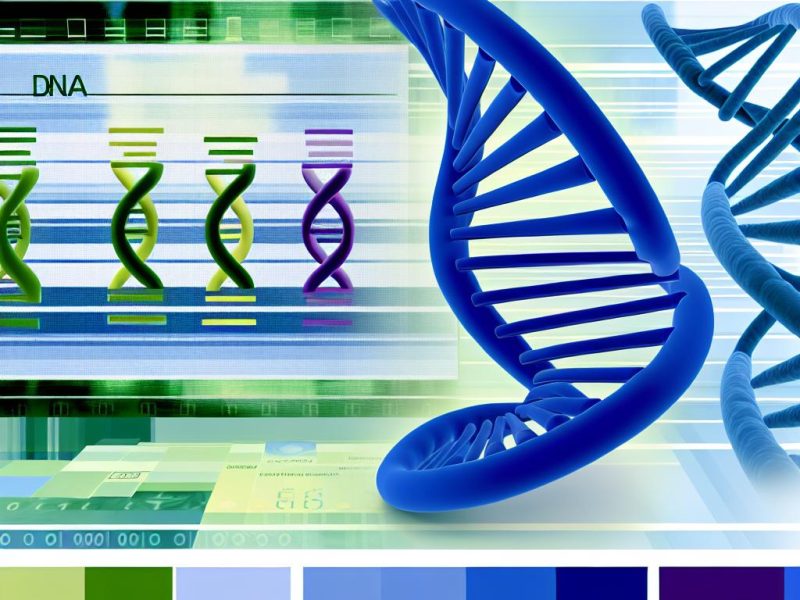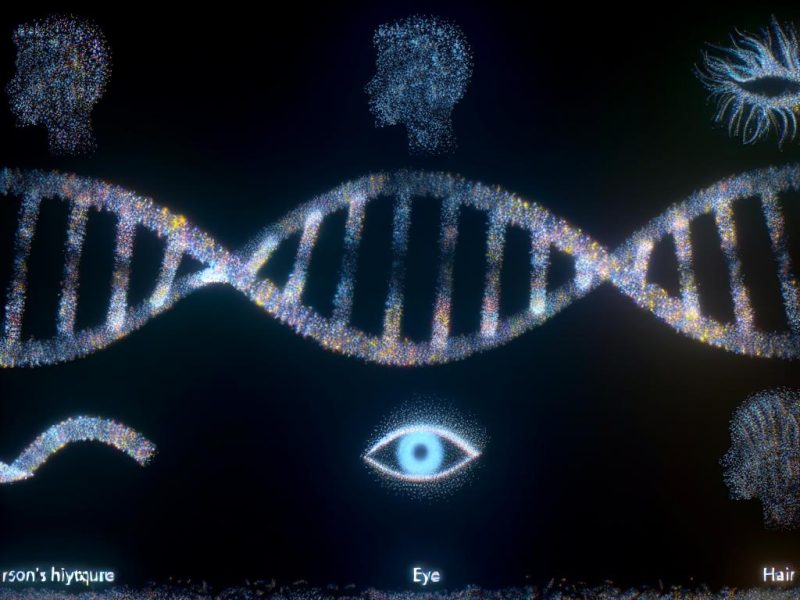Understanding DNA and Its Role in Inheritance
DNA, or deoxyribonucleic acid, is the cornerstone of genetic information in living organisms. It is housed in the cells of every living organism and plays a crucial role in the transmission of genetic information from one generation to the next. The study of DNA is instrumental in genetics, a field that concerns heredity and the variations in organisms.
The Structure of DNA
At a molecular level, DNA is a complex structure formed by the pairing of four types of nucleotides: adenine (A), thymine (T), cytosine (C), and guanine (G). These nucleotides form the rungs of the DNA ladder-like structure, connecting through specific pairings: adenine pairs with thymine, while cytosine pairs with guanine. This precise pairing is essential for the replication and functioning of DNA.
Encoding Genetic Information
The sequence of these nucleotides encodes genetic information, which dictates the development and functioning of the organism. Genes, segments of DNA, act as instructions to make proteins. These proteins, in turn, play numerous roles in organisms, from acting as enzymes to providing structural support. This encoding of information directly contributes to an organism’s phenotype, the observable traits influenced by both genetic and environmental factors.
DNA Replication
For inheritance to occur, DNA must be accurately replicated during cell division. The process of replication involves unwinding the double helix structure of DNA and using each strand as a template to form new complementary strands. This replication ensures that each new cell inherits a complete set of genetic information from the parent cell.
Genetic Variation and Mutation
While replication is generally accurate, errors can occur, leading to mutations. These mutations can alter the genetic code and potentially result in changes in the phenotype. Mutations can be neutral, beneficial, or harmful, and they contribute to genetic diversity within populations. Over time, genetic variations can influence evolutionary processes, leading to the adaptation of species.
For further reading on the role of DNA in hereditary processes and genetic research, you might find scientific articles and resources on platforms such as Nature or ScienceDirect helpful.
The Significance of DNA Understanding Layers
Understanding DNA is not only important for basic biology but also has far-reaching implications in medicine, agriculture, and even forensic science. The knowledge of how DNA operates has paved the way for advancements in numerous fields.
Medical Implications of DNA
In the field of medicine, knowledge about DNA has provided significant insights into genetic disorders. Disorders that were once mysterious are now understood in terms of genetic mutations. Techniques like genetic screening and testing help in identifying susceptibility to certain diseases, which can be crucial for prevention and early treatment. Gene therapy, though still in experimental stages, aims to correct defective genes, potentially offering cures for genetic disorders.
Agricultural Advancements through DNA Technology
In agriculture, DNA technology has enabled the development of genetically modified organisms (GMOs), leading to crops that are more resilient to pests, diseases, and environmental conditions. This advancement ensures higher yield and food security. Moreover, DNA analysis aids in the conservation of biodiversity by understanding the genetic makeup of various plant and animal species, helping in breeding programs and conservation efforts.
Forensic Science and DNA
In forensic science, DNA profiling has revolutionized the way criminal investigations are conducted. Each individual carries a unique DNA signature, which is used to identify suspects with high accuracy. This has made solving crimes more efficient and resolved many cases that would have been impossible to crack with traditional methods.
The Ethical Considerations
As we delve deeper into the capabilities of DNA technology, it is imperative to consider the ethical implications. Questions arise about genetic privacy, potential misuse of genetic information, and the moral aspects of genetic modification. It is vital for researchers, policymakers, and society to engage in discussions to ensure that DNA technologies are used responsibly, balancing scientific progress with ethical constraints.
Future Prospects of DNA Research
DNA research continues to expand, promising exciting prospects for the future. The Human Genome Project has already decoded the blueprint of human DNA, but the journey of discovery is far from over. Researchers continue to uncover the intricacies of genetic information and its applications.
Advances in Personalized Medicine
One promising area is personalized medicine, which tailors healthcare treatments to individual genetic profiles. By understanding a person’s unique genetic makeup, treatments can be optimized for effectiveness and minimized for side effects, representing a transformative shift in healthcare.
The Potential of CRISPR Technology
The advent of CRISPR technology is another significant breakthrough. With the ability to edit genes precisely, CRISPR holds the potential for curing genetic diseases, developing disease-resistant crops, and even combating climate change by modifying genes in ecological systems.
Evolving Understanding of Epigenetics
Beyond the basic sequence of the genome, epigenetics explores how gene expression is regulated by environmental and developmental factors without altering the DNA sequence. This understanding is crucial in fields like developmental biology, cancer research, and neurobiology, offering insights into how genes are turned on and off.
Collaborative Research Initiatives
The complexity and interconnectivity of genetic research demand collaborative efforts across disciplines and borders. International projects and consortiums are increasingly common, pooling resources and expertise to tackle ambitious research questions about DNA and its multifaceted roles in life.
In conclusion, DNA’s role in inheritance is fundamental, encoding the genetic blueprints that define organisms and allowing for the transfer of these blueprints from parents to offspring. Its replication, mutation, and expression are central to the continuity and diversity of life on Earth. As research progresses, the understanding and application of DNA knowledge continue to evolve, promising advancements that could profoundly impact society and the natural world.



